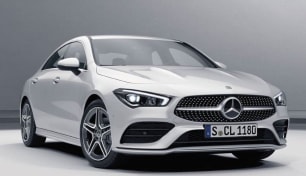The e-tron GT is a big car, so it has potential for family duties, but it’s also a sports car, and that means some compromises.
The new front sports seats in any of the various trim options offer incredible levels of comfort, ample support and they’re well cushioned. This is a Grand Tourer so comfort is important and that box is well and truly ticked.
It’s low to the ground which helps with feeling connected to the road, and the multi-adjustable seats and steering wheel mean it’s easy to find your perfect driving position.
With the addition of new air suspension as standard, the e-tron GT has a neat trick. When you touch the door handle, the set-up automatically increases the vehicle’s ride height by up to 77mm to make it easier to get in and out of. \
Don’t expect much visibility out the tiny rear windscreen, but you can rely on the clear surround-view camera display.
From the driver’s seat, everything comes easily to hand. The multimedia screen isn’t a stretch to reach, nor are the buttons on the stack and console. Thanks for keeping buttons, too, Audi.
Audi’s current multimedia setup is solid. It has big menu icons, logical menu steps and you can swipe across for more.
The ‘Virtual Cockpit’ digital instrument cluster is also excellent and easily customisable. The built-in sat nav shows up in multiple places if you like, such as the head-up display, instrument display or multimedia screen. During our extensive drive from Frankfurt, it didn’t miss a beat.
The optional panoramic glass roof has a cool feature. You can switch from opaque to clear with the touch of a button. And you can even have a mix of the two. Clever.
To maximise space, Audi moved the phone charger to inside the central bin. Given it is hard up against the side, it doesn’t consume that much room.
Elsewhere up front, smaller bottles will only fit in the door pockets if they are lying flat.
In a smart bit of design from Audi, the battery pack is split to accommodate deeper footwells for the rear passengers. So many electric cars, especially sedans, suffer from having the battery pack under the entire length of the vehicle's floor which means your legs sit awkwardly upright. Hello Tesla...
As a result, you can sit like a normal human in the back of the e-tron GT, and there’s ample legroom behind my six foot-plus driving position. That’s helped by scalloping the rear of the front seats. Headroom is tight but that’s expected given the swoopy roofline.
There’s no bottle storage in the rear doors, only enough room for a phone. You get lower air vents, seat heating controls and a central fold-down armrest with cupholders.
The boot is long and the 60/40 split seats fold flat which is handy for loading long items. There are a number of nooks and a handy cargo net, too. Luggage space ranges from 405 litres for the S e-tron GT to 350L for the RS performance. There’s a sizeable front trunk for housing charging cables.





































































.png)




